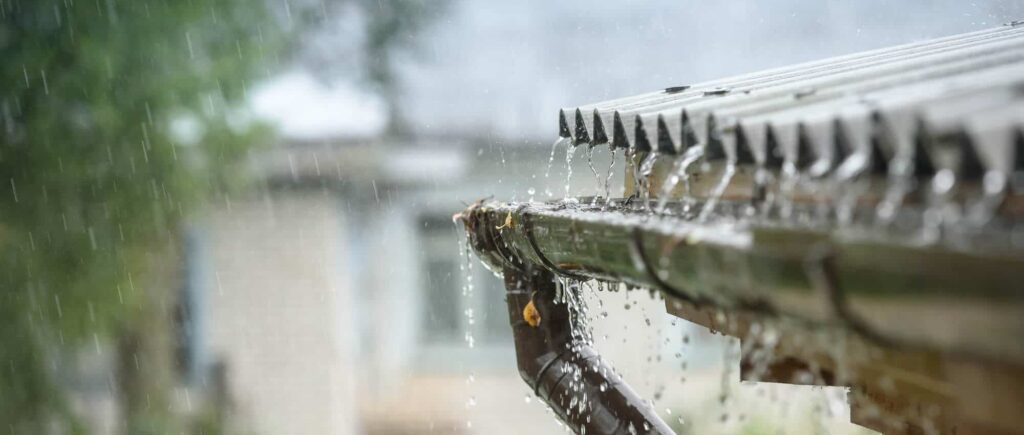Weather can be unpredictable. It doesn’t always stick to the forecast and can wreak havoc with your roofing project. The last thing you want is a weather delay in pushing back your project, or worse still, an unexpected weather change that could mean more damage to your building and expensive materials.
Commercial roofing experts offer practical advice on tackling weather-related issues on your roofing job. Read to learn how weather impacts commercial roofing.
Extreme Heat
Here are ways extreme heat can cause damage to your commercial roofing:
- Check for cracks in the surface of the material used for your roofing system.
- Check for warping of the roofing system.
- Look for discoloration of your roof’s surface—this could indicate that excessive heat has caused damage to the material underneath the paint or stain.
Wind
Wind can send shingles flying off the roof. Sheeting can also be thrown away. The wind will cause the sheeting to flap and move around on the roof, damaging its integrity and tearing it off completely. Having a strong seal between the roof and your building is essential. If there is no seal, you can expect many problems when keeping water off your roof in rainy weather.
Trees also can rub against gutters or roofs, causing corrosion; ensure trees are not near the house.
Hail
Hail damages the roof surface. The size of the hail, and its speed when it hits your roof, will determine how much damage it causes. In addition to causing damage to the surface, hail can also crack or break tiles or shingles, cause leaks in areas where there are seams between materials (such as around vents and pipes), and damage flashing around vents.
Rain
if water accumulates on your roof, it begins to leak through cracks or holes. Rain can also cause mold growth in areas with high humidity levels (such as bathrooms). Mold spores thrive in damp environments like this one because they need moisture for their growth cycle to begin.
How to Regulate the Weather from Damaging Your Commercial Roof
To regulate the weather from damaging your commercial roof, you need to do the following:
Periodic Roof Inspection
Inspecting your commercial roof is crucial to ensuring that it will last for years. You may have a leaky roof if you don’t inspect it regularly. Inspecting your commercial roof can also help you determine if any repairs are needed before significant damage occurs.
You should do inspections bi-annually. If you’re unsure what to look for during an inspection, here are tips:
- Look for damage and wear and tear
- Look for missing shingles or tiles
- Check for signs of leaks, such as stains on the ceiling and walls
- Make sure all flashing is intact and in good condition
If you notice damage on your commercial roof, it’s time to call in an expert who can assess the problem and suggest a solution. The sooner you discover any damage to your commercial roof, the easier it will be for you to fix it.
Repair Damages
Commercial roofs face harsh sun and wind, rain, snow, ice, and more. If there is damage on the roof caused by heat, wind, hail, ice, or other factors, you should take steps to repair it soon.
To repair your commercial roof:
- Check for cracks in the roofing membrane. These will need to be sealed immediately by non-skinning sealant if it’s a metal roof.
- Check for loose or missing shingles on your roof; extreme winds or hail storms cause them. Replace any missing shingles immediately, or else you risk water getting into your building’s structure and causing severe damage over time.
- Check for any damage caused by trees or falling branches—these can cause leaks if left untreated!
Clean Gutters And Roof Surface
Roofs are a significant source of water flow, so if you keep them free of debris, you can avoid clogs and leaks.
It’s essential to clean your gutters regularly so that rainwater can run off properly. When gutters are full of debris, they can’t do their job of directing water away from your building’s foundation. It leads to mold and rots in the wood framing or leaks in the roof itself.
Clean gutters six times a year, but you should clean them more often if you see evidence that leaves and other debris are collecting there frequently.
Whether you’re a budding commercial roofer or are simply looking to remodel your roof, understanding how the weather impacts commercial roofing is an essential step to making an informed decision on the best practices for your particular needs.






